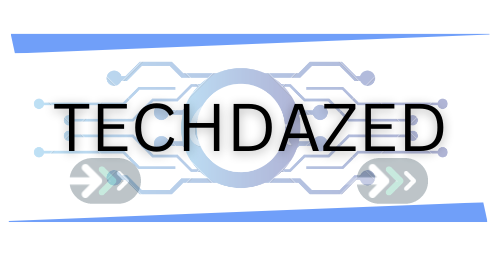There’s a fine line between being technically ready and being submission-ready. Preparing for a C3PAO assessment isn’t just about meeting technical standards — it’s about organizing and delivering your evidence in a way that tells a clear, confident story. Each piece matters, especially in how it’s framed and presented to the assessor.
Structured SSP Documentation That Streamlines C3PAO Review
A System Security Plan (SSP) is more than a document — it’s your roadmap for showing how your organization meets CMMC level 2 requirements. The structure of your SSP directly influences how smoothly the Certified Third-Party Assessor Organization (C3PAO) can interpret and validate your practices. A well-organized SSP should clearly align each control with its associated policy, process, and technical safeguards. Each control family should have consistent formatting so assessors can quickly scan and verify the necessary components.
Beyond just completeness, clarity makes all the difference. Embedding direct links to referenced policies or related documents within your SSP helps eliminate guesswork during the review. Using structured sections for control identifiers, implementation details, and system boundaries makes your document more assessor-friendly. This level of detail reflects preparation — something C3PAOs recognize instantly and respect.
How Does Proper Evidence Formatting Expedite C3PAO Validation?
Evidence collection without formatting is like turning in homework without organizing your answers — the information might be there, but no one wants to dig through it. For CMMC level 2 compliance, presenting evidence in a structured, standardized format helps C3PAOs validate controls faster. Screenshots should include date stamps, file names should be descriptive, and logs must show clear timestamps and relevance to the control being assessed.
PDFs, screenshots, or exports from tools should be labeled clearly to match their control reference. For example, if evidence supports AC.1.003, that label should appear in both the file name and any cover sheet summary. Submitting clear, organized documents prevents time-consuming back-and-forth with your assessor — and that efficiency could mean the difference between a smooth review or one that stretches unnecessarily.
Also read: Data Governance: Building a Robust Strategy for Success
Explicit Mapping of Controls Simplifies C3PAO Submissions
Control mapping is one of the easiest areas to overlook — but one of the most appreciated by C3PAOs. When each requirement under the CMMC level 2 framework is mapped to specific system components, processes, and evidence artifacts, assessors can move faster and with greater confidence. A matrix or crosswalk that ties controls to internal documentation, screenshots, and policies helps create a full picture at a glance.
Explicit mapping also ensures that nothing gets missed. When your team can trace the thread from NIST 800-171 control to implementation details and artifacts, it becomes easier to identify gaps before the assessor does. If you’re working with a CMMC RPO, this mapping step is often a key area of focus in your preparation timeline.
Does Your POA&M Clearly Address C3PAO-Identified Gaps?
A Plan of Action and Milestones (POA&M) isn’t a weakness — it’s a signal of maturity. But how that POA&M is written matters deeply. If a C3PAO sees vague language, unclear timelines, or missing milestones, it raises concerns about your organization’s ability to address deficiencies. Clear entries should include a description of the gap, the responsible party, the projected completion date, and the exact resources being allocated to close it.
More importantly, your POA&M should reflect progress. Showing updates, revised timelines, or partial remediation tells the assessor that your team is actively managing compliance. This also shows you’re committed to meeting CMMC compliance requirements, even if some pieces are still in motion. Transparency here is a strength, not a liability.
Artifact Traceability Techniques That Impress the C3PAO
Traceability connects the dots. The easier it is for a C3PAO to trace each artifact to a control and understand its purpose, the more seamless the assessment becomes. One effective approach is using an artifact register — a spreadsheet or index that lists each file name, control reference, description, and date of collection. This tool becomes the assessor’s roadmap, guiding them through your documentation quickly.
You can also embed headers or footers within the artifacts themselves that state which control they support. Consistent traceability shows a proactive mindset — assessors aren’t forced to ask for context or clarification. That professionalism not only smooths the review but often builds early confidence with your C3PAO contact.
What Details Must Your CUI Data Flow Illustrations Include?
CUI (Controlled Unclassified Information) data flow diagrams are more than just pretty graphics — they must accurately illustrate how CUI moves through your systems. To meet CMMC level 2 compliance, these visuals should include entry and exit points, security boundaries, cloud environments, and all physical or virtual storage points. Clearly identifying which users or roles interact with CUI strengthens the diagram’s impact.
Adding labels for protection mechanisms — such as encryption, firewalls, or multifactor authentication — helps provide context without overloading the drawing. These details make it easier for the C3PAO to understand the systems and boundaries involved. A good diagram leaves little room for doubt, making it a key deliverable in your submission.
Ensuring Submission Integrity Through Consistent Control Narratives
Narratives tell the story of how your organization satisfies each requirement — but consistency across them builds trust. If one control description is hyper-detailed while another is vague or contradicts a related entry, it signals disorganization. That’s why aligning terminology, structure, and scope across your narratives is vital to demonstrating real adherence to CMMC compliance requirements.
Control narratives should each include who’s responsible, what tools are used, and how the implementation is monitored. Writing them in an active, first-person style shows ownership and helps avoid passive language that weakens credibility. C3PAOs want to see that your team knows the environment and owns the implementation — not just copied templates filled with buzzwords.

